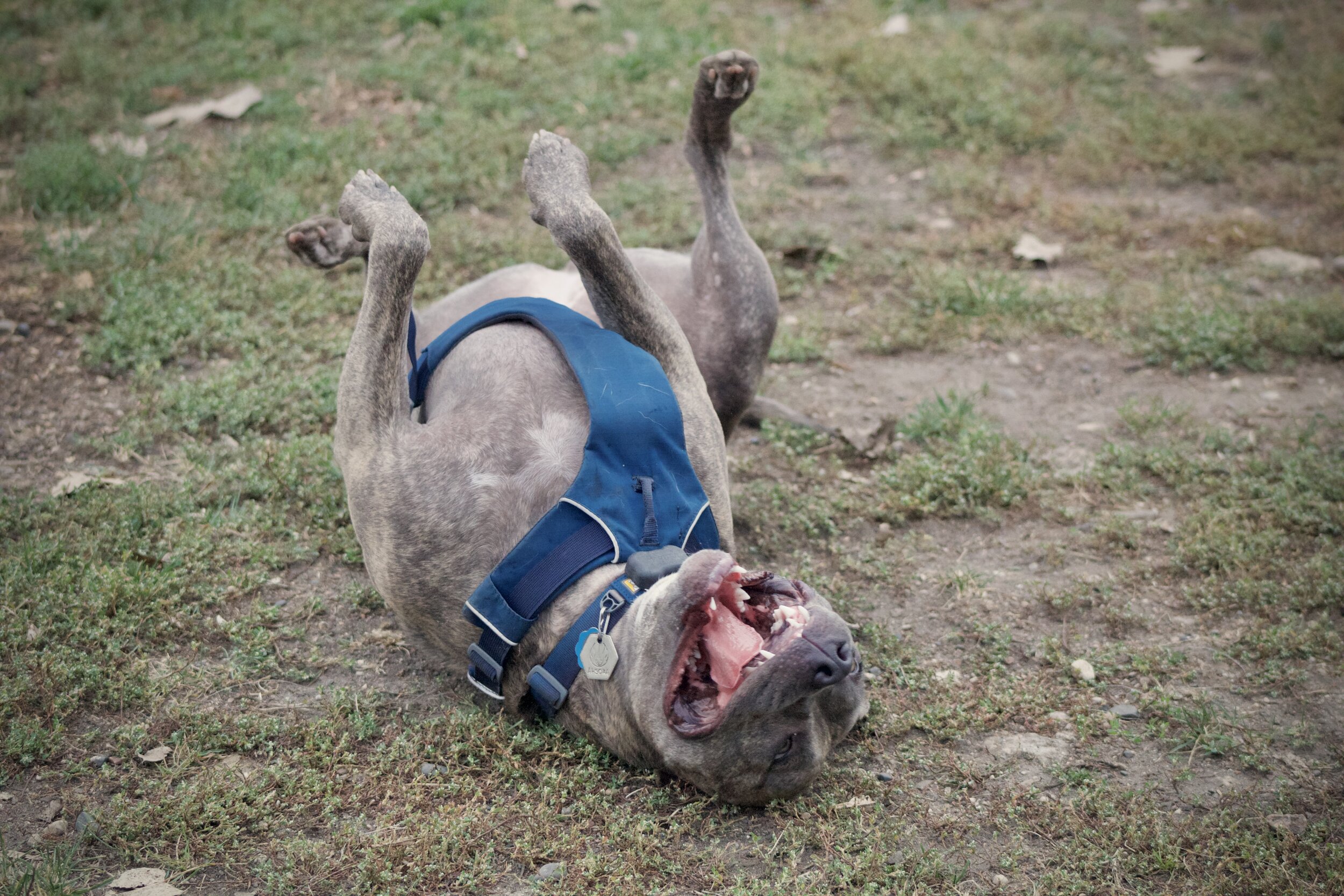What to do when your dog is actually a monster.
/Ahsoka in the middle of dog park shenanigans. Collar attachment is a gps/fitness tracker, not a shock collar.
If you look up the word “monster” in the dictionary, you’ll see a photo of my two dogs, Ahsoka and Ezra. They’ll appear sweet and well-behaved in said photo but monsters are good at hiding their true colors. Ok, fine, I made that up because I’m dramatic and haven’t slept through the night in a long time. Living with young monsters dogs will do that to a person.
Ezra barking at me during a photoshoot. He is wearing a gps/fitness tracker, not a shock collar.
It may feel like we live with monsters when we share our home with dogs. They put everything in their mouths, chew through cords and shoes, urinate and defecate on our pile of clothes that we leave on the bathroom floor, and zoom around the house during their monster hour(s), catapulting themselves off furniture and sliding across the floor. So how do we survive? What can we do to make our dogs a little less like…monsters?
Block Access
Using things like baby gates and exercise pens can help to prevent undesirable behaviors from occurring. In our house we have baby gates up to block our dogs from going into spaces that aren’t puppy-proofed. Our garbage can is kept in a cupboard with a cupboard lock to prevent garbage parties. We have cord hiders up to prevent cords from being accessed. My many houseplants are kept out of reach so that they don’t become victims of our house monsters. Our windows have window frost on them to prevent watchdog barking.
Keep it Tidy
I used to be a messy person but having young dogs has changed that. I often remind myself that anything I leave in reach of the dogs is fair game to them. They don’t understand right from wrong and they are quite opportunistic. So now shoes get put away, Laundry is out of reach, cardboard gets taken out immediately or kept on the counter and I refrain from blaming the dogs for getting into things that I left out. Think of it as a team effort. If you don’t leave your shoes in reach, your dog won’t chew them up.
Enrichment
When our dogs are behaving like monsters, it likely means they are bored. We don’t use boring bowls to feed the dogs at our house. Food is delivered via mentally enriching activities, like scavenging, puzzle toys and training sessions. If they still have energy we have an impromptu play date with doggie friends or go for a hike. Dogs often need more enrichment than we provide. Either we can fill their enrichment needs or they will do it themselves, probably in a way that we don’t prefer them to.
Scan and Reinforce
It is easy to be upset with our dogs for chewing our shoes or tugging on our clothes but I would guess that most dogs are behaving in a desirable way more than not. If we put more of our focus on reinforcing the behaviors we want to see more of, our dogs will continue to perform those behaviors. So next time they approach you silently, toss them a cookie or scratch that sweet spot on their neck before they bark or jump up on you.
Ahsoka sitting on the rug instead of trying to eat our food off the counter. This took time to train and we managed by restricting her access to the kitchen until she was able to resist the temptation.
Train
While you will likely need to start out of context, training your dogs to perform alternative behaviors can relieve stress. For example, if your dog attempts to steal food off your plate you can teach them to stay on a bed during meals. Start out by teaching a “stay” without the distraction of your meal. Then you can add in distractions like empty plates and bowls, eventually building up their stay behavior when you are eating a meal. This won’t be an instant fix as it takes time and effort to train behaviors. In the meantime, utilize some of the other ideas for more immediate relief.
Legal Outlets
Our instinct as humans is to eliminate behaviors we don’t like but that can be more harmful than it is helpful. It may seem backwards to allow dogs to dig or rip things up but it can be life changing for both you and your dog. Here are some legal outlets for commonly undesired, yet normal, behaviors.
Ahsoka playing rough with her bff, Arrow, instead of body slamming me.
Allow your dog to dig in a designated digging area. This could be a sandbox, small section of the yard, etc.
Play tug with very specific tug toys and teach tug rules to prevent more of your clothing from being ripped to pieces.
Let your dog rip apart their toys or tear up the junk mail so they don’t target your pillows and shoes.
Use a flirt pole to satisfy your dog’s desire to chase things that move.
Have Fun
Our dogs are going to act like monsters sometimes. Instead of fighting it, I embrace their naughtiness by jokingly mocking them, taking video of their antics, calling them names with my happy voice and sometimes joining in on the fun.
We love our dogs and we want them to be happy members of our family. I hope these tips help you find some peace while living with your own monster of a dog.















































































